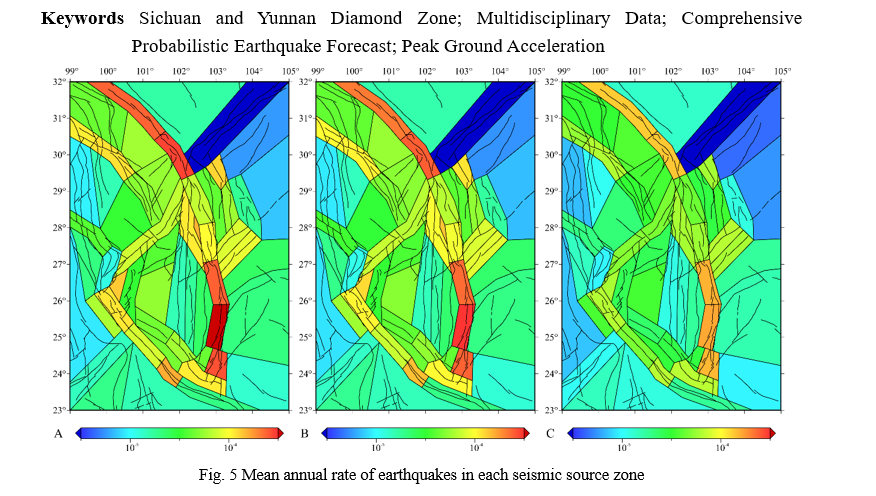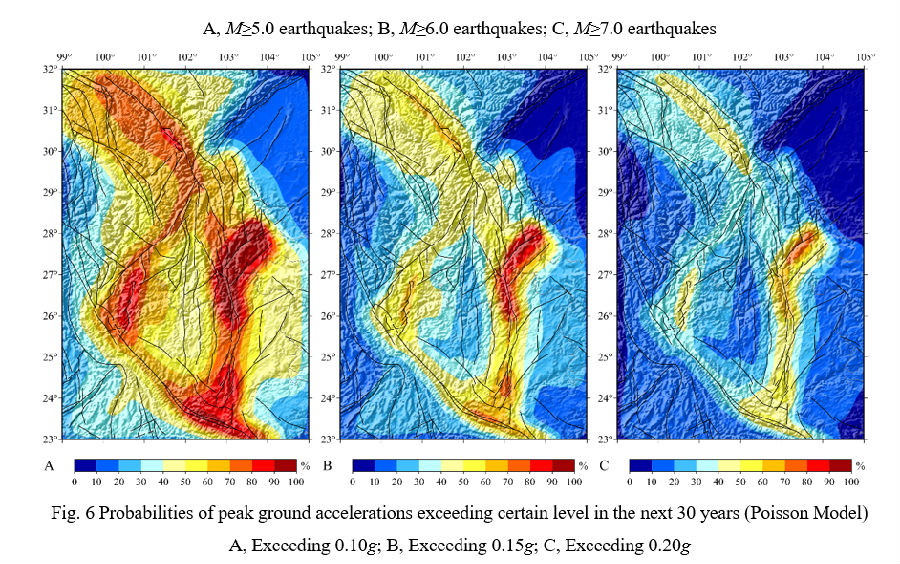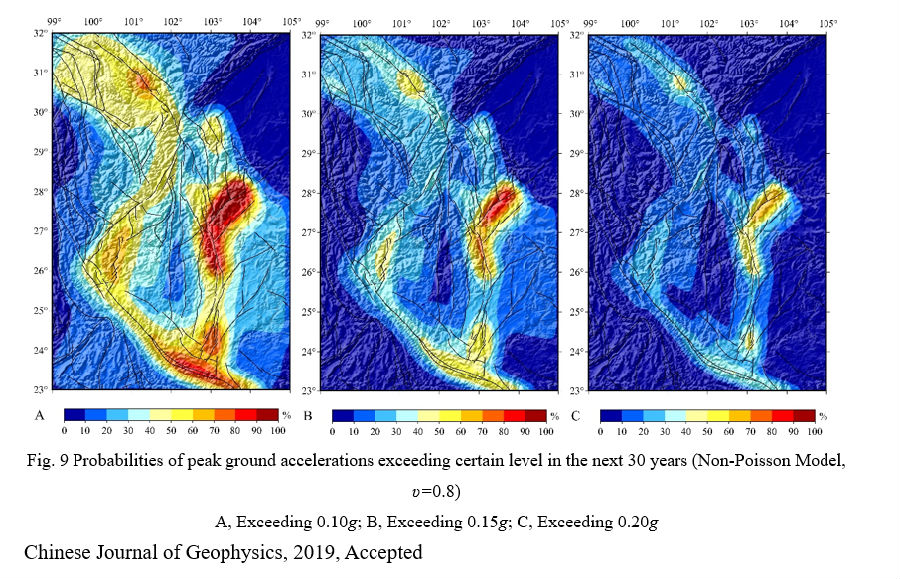Abstract Sichuan and Yunnan are among the areas with most severe seismic hazard in China, thus hazard estimation is significant to earthquake prevention and disaster reduction. Probabilistic seismic hazard analysis is an effective tool for quantifying seismic hazard, which requires the “best available science” to calculate the mean rate of earthquakes. Compared with data in California, the data in Sichuan and Yunnan is somehow limited, which is insufficient to build a counterpart of the currently used third version of Uniform California Earthquake Rupture Forecast model (UCERF3). However, it is adequate to carry out a multidisciplinary approach. By gathering geologic, geodetic and seismologic data in the area, we calculated the magnitude-frequency distribution. By applying Poisson and Non-Poisson model, we obtained the patterns of peak ground acceleration (PGA) exceeding rate. The result show that, when the target PGA is low, the main boundaries of Sichuan and Yunnan Diamond Zone all have high exceeding rate, such as Xianshuihe Fault Zone, Anninghe Fault Zone, Zemuhe Fault Zone, Xiaojiang Fault Zone, Honghe Fault Zone and Xiaojinhe Fault Zone; when the target PGA is high, Xianshuihe Fault Zone, Northern and Southern sections of Xiaojiang Fault Zone and Lianfeng-Zhaotong Fault Zone in the eastern boundary of Sichuan and Yunnan Diamond Zone still have moderate to high exceeding rate, but the rates in Anninghe Fault Zone, Zemuhe Fault Zone and central section of Xiaojiang Fault Zone are relatively low. Finally, we compared the result of our research with that of predecessors, and discussed the possible reasons of differences and similarities between the results.







